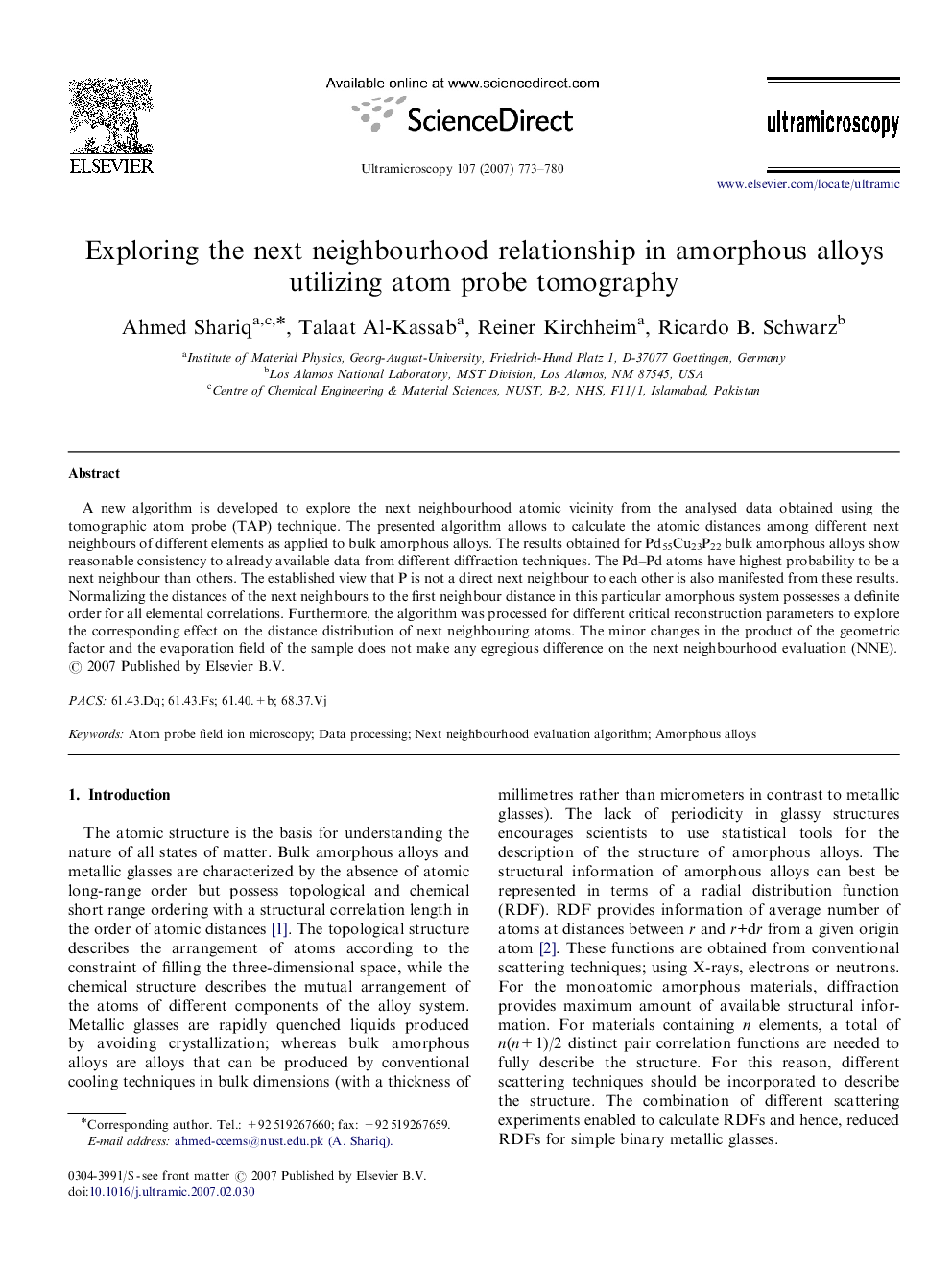| Article ID | Journal | Published Year | Pages | File Type |
|---|---|---|---|---|
| 1678892 | Ultramicroscopy | 2007 | 8 Pages |
A new algorithm is developed to explore the next neighbourhood atomic vicinity from the analysed data obtained using the tomographic atom probe (TAP) technique. The presented algorithm allows to calculate the atomic distances among different next neighbours of different elements as applied to bulk amorphous alloys. The results obtained for Pd55Cu23P22 bulk amorphous alloys show reasonable consistency to already available data from different diffraction techniques. The Pd–Pd atoms have highest probability to be a next neighbour than others. The established view that P is not a direct next neighbour to each other is also manifested from these results. Normalizing the distances of the next neighbours to the first neighbour distance in this particular amorphous system possesses a definite order for all elemental correlations. Furthermore, the algorithm was processed for different critical reconstruction parameters to explore the corresponding effect on the distance distribution of next neighbouring atoms. The minor changes in the product of the geometric factor and the evaporation field of the sample does not make any egregious difference on the next neighbourhood evaluation (NNE).
